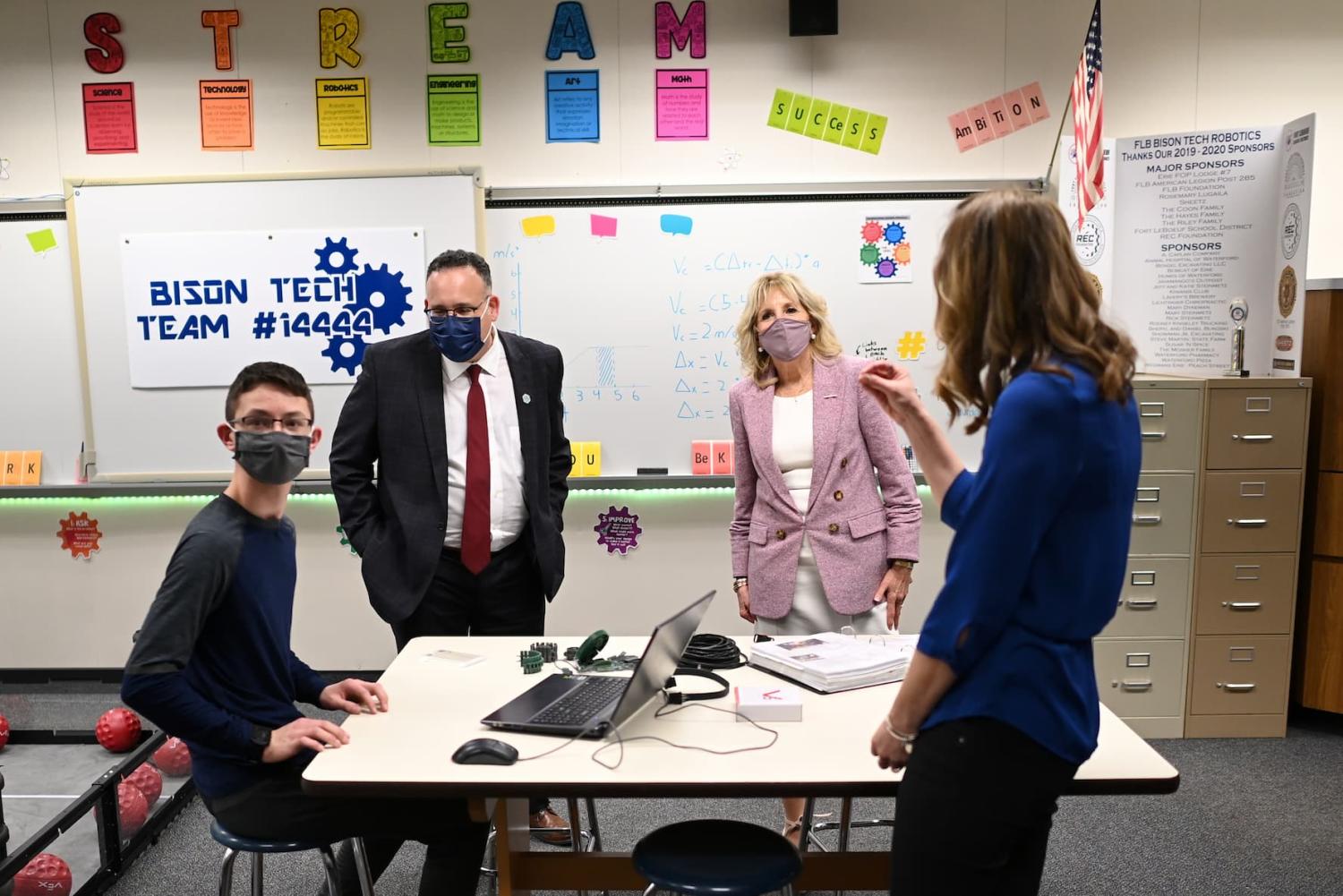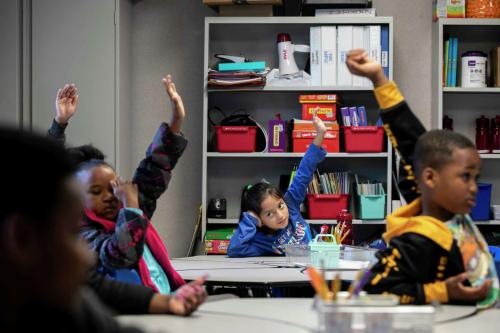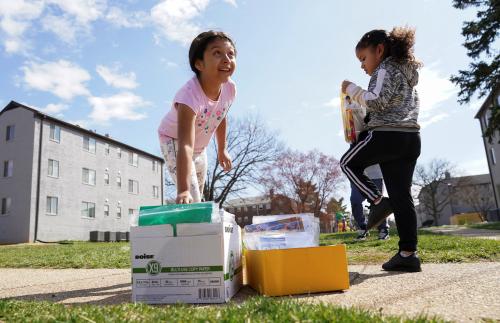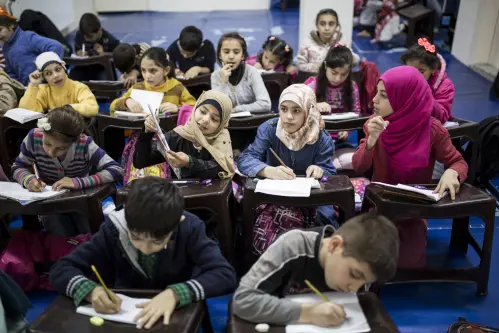Debates over school spending have a long and contentious history in politics, litigation, and research. Thankfully, research has reached more of a consensus in recent years—finding consistent evidence that increasing overall school spending improves student outcomes. Now, the most pressing questions are about how and where to spend scarce school funding dollars. Yet, there are gaps in the school finance literature. Most analyses examine spending on day-to-day school operations, including educators, materials, and other school staff positions, but we have less evidence on the impacts of school infrastructure spending. This is an important spending category that includes classroom space, durable technological upgrades, health and safety improvements, and extracurricular facilities.
This is not without consequence. Spending on new capital infrastructure surpassed $90 billion nationally in each of the past two years, roughly 10% of total education spending. At the same time, federal survey data suggest that millions of students attend schools in fair or poor condition, and half of school districts need to replace or update multiple systems, like HVAC or plumbing. Moreover, nearly 80% of funding for capital infrastructure is generated locally, resulting in higher spending in higher-income school districts. This stands in contrast to operational expenditures, for which states play a more significant role and state-level school finance reforms have reduced the link between local income and school spending levels.
Our research brings new, cross-state evidence on the impacts of school infrastructure spending. We examine data on roughly 14,000 local bond elections from 1990 to 2017 across 29 states. We also analyze ballot text from these elections to identify which facility improvements are funded with new bond dollars.
We then track outcomes several years before and after bond passage—or failure—including spending, demographics, test scores, and house prices. We find that, on average, capital spending improves test scores and boosts local property values, but the magnitude of these changes depends crucially on the local context. Key factors include district demographics, the level of past investment, and the type of school facility improvement being funded. These findings can offer guidance on how and where school capital investments can offer the biggest bang for the buck.
Past research on school infrastructure funding shows mixed evidence
Prior research on school capital spending finds inconsistent impacts. Some state-level studies, like in Texas, find no evidence of academic improvements. Others, in California, find positive impacts on test scores and house prices. Meanwhile, studies from Michigan find inconsistent evidence of test score impacts, but notable reductions in arrest rates in adulthood.
Others have studied large facility improvement programs in specific districts—most notably, in Los Angeles and New Haven—finding improved test scores, student attendance, and local house prices. Meanwhile, one multi-state study looking at fiscal windfalls from new wind farm installations found little academic boost from the new facility investments.
When averaged together, a recent meta-analysis found that the average effect of facility spending is positive, despite the variation in effects across studies.
Two reasons may explain the inconsistency of the research record. First, prior studies may fail to detect positive impacts because effects are small and spread over several years; the expected useful life of a new school building is often expected to span several decades. And second, the context of capital improvement varies, which may also be a source of the discrepancy. Districts invest in very different projects—from new classroom space to athletic facilities—that could produce different impacts. The baseline facility quality in districts also varies, and we might expect investments in places with poor-quality buildings to produce greater returns. And more broadly, states vary in their restrictions on districts’ ability to finance new capital projects; for example, several states require that local bonds for school infrastructure receive a supermajority of votes to pass, as high as two-thirds.
Infrastructure improvements boost test scores and house prices—but it depends on how and where money is spent
To better characterize average impacts and how they vary across contexts, our new study relies on detailed bond- and district-level data spanning nearly three decades. The key challenge we face in determining impacts is that capital spending is not random; most often, it is funded through local bond issuances that reflect community wealth, educational values, and politics.
To overcome this, we rely on a technique common in research using election data: We compare close winners and losers of bond elections. Intuitively, districts that barely fail and barely succeed in passing a bond are similar except in their subsequent school facility investments. We then track these districts over the next decade and restrict our comparisons to districts with similar histories of bond passage. Prior research has studied individual states using a similar approach; we expand on this and estimate national effects, examining differences in bond spending category and district characteristics across decades of election data from more than half of states.
In districts that barely succeed in passing bonds, we see a cumulative increase in capital spending of roughly $1,500 per student over the first four years post-passage. Then, eight years after bond passage grade 3 through 8 math and ELA test scores are significantly higher, by about eight percent of a (district-level) standard deviation. For reference, the magnitude of this estimate is akin to closing eight percent of the initial achievement gap between high- and low-SES districts in our data. We also looked at house prices, and they rise by about nine percent after eight years.
Going beyond the simple average estimate, however, reveals a more nuanced picture. What the money is spent on, it turns out, makes a big difference. Investments in HVAC, STEM equipment, safety/health, plumbing/roofs/furnaces, and classroom facilities all produce notable and statistically significant improvements in test scores. HVAC investment has the largest impact—roughly 20% of a standard deviation—yet yields no detectable impact on house prices. In contrast, we find no positive impact of athletic facilities, land purchases, or transportation spending on test scores, but we do find that athletics spending increases nearby house prices.
Beyond the question of “what” is being bought, the question of “who” is spending matters as well. Positive effects are concentrated in districts with high shares of low-income and/or Black and Hispanic students. More white and affluent districts see no positive impacts from additional facility spending. Furthermore, districts with low prior capital stock—which we measure by using past capital spending data going back to the 1970s—have much larger impacts.
When we jointly examine both income and prior facility quality, we see that income still makes a difference: For districts with low prior capital stock, those with more low-income students still see larger impacts on test scores and house prices. In other words, low-income districts see benefits for reasons beyond just the fact that they tend to have lower-quality facilities to begin with.
Targeted policies to reduce spending gaps and invest in high-impact projects could help close achievement gaps
Understanding how school facility spending impacts vary is important for policymakers. As mentioned earlier, capital funding is primarily locally provided, resulting in spending gaps by district income and wealth. Addressing these gaps and targeting additional education dollars towards lower-income districts—and on higher-impact projects—could help address existing test score gaps. Our findings can provide some guidance on the potential magnitude. Based on our estimates, eliminating the capital spending gap between low- and high-income districts could close around eight percent of the test score gap between them. But, if these additional funds were targeted toward the projects we estimate to have higher impact, including HVAC and other basic infrastructure, the impact could be larger—closing up to 25% of the test score gap.
Of course, these back-of-the-envelope extrapolations abstract from other factors that we cannot measure. There could also be impacts on other academic and non-academic outcomes beyond the scope of our analysis. Nevertheless, our findings offer important new evidence on infrastructure spending and how to best utilize school funding to support student outcomes.
As education data improves and research on school spending advances, our results show that a nuanced understanding of the factors shaping infrastructure investments—and how impacts vary across contexts—is key to help policymakers better target facility funding to improve outcomes.









